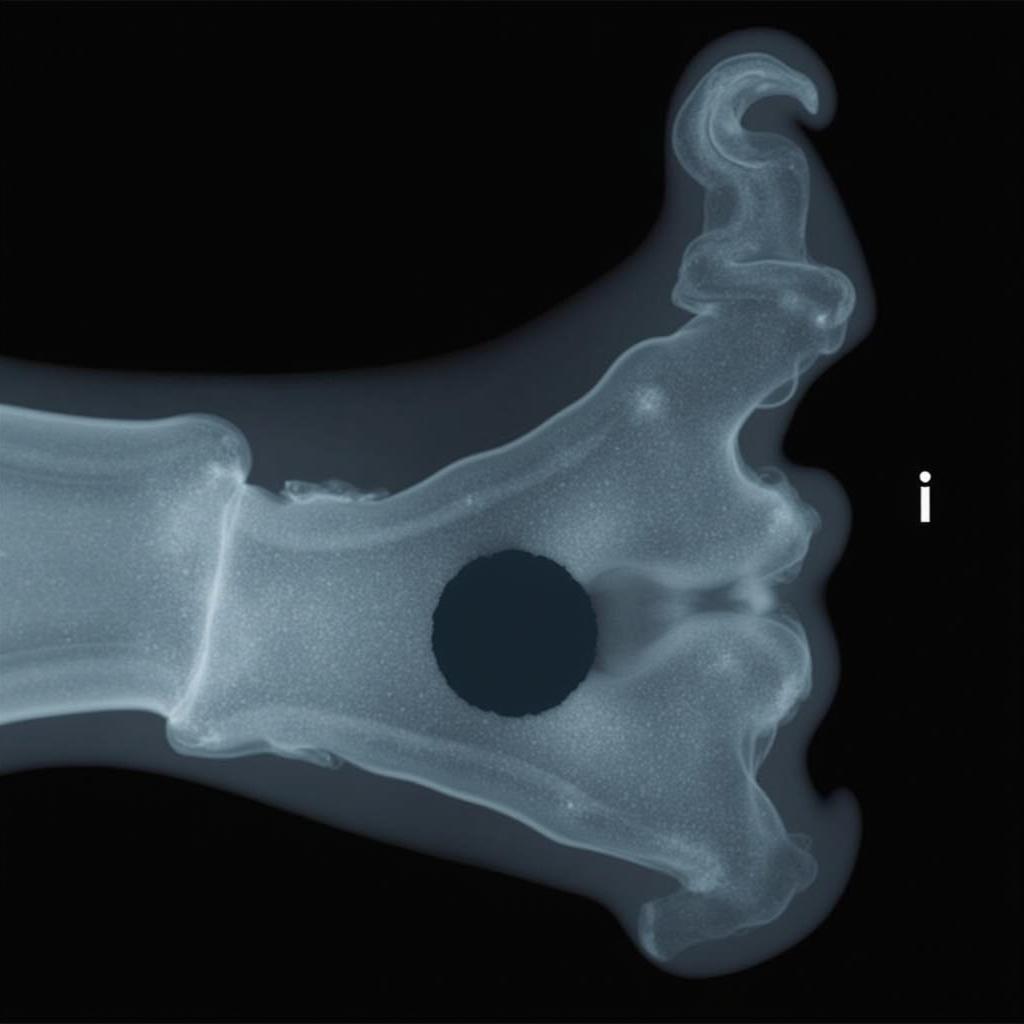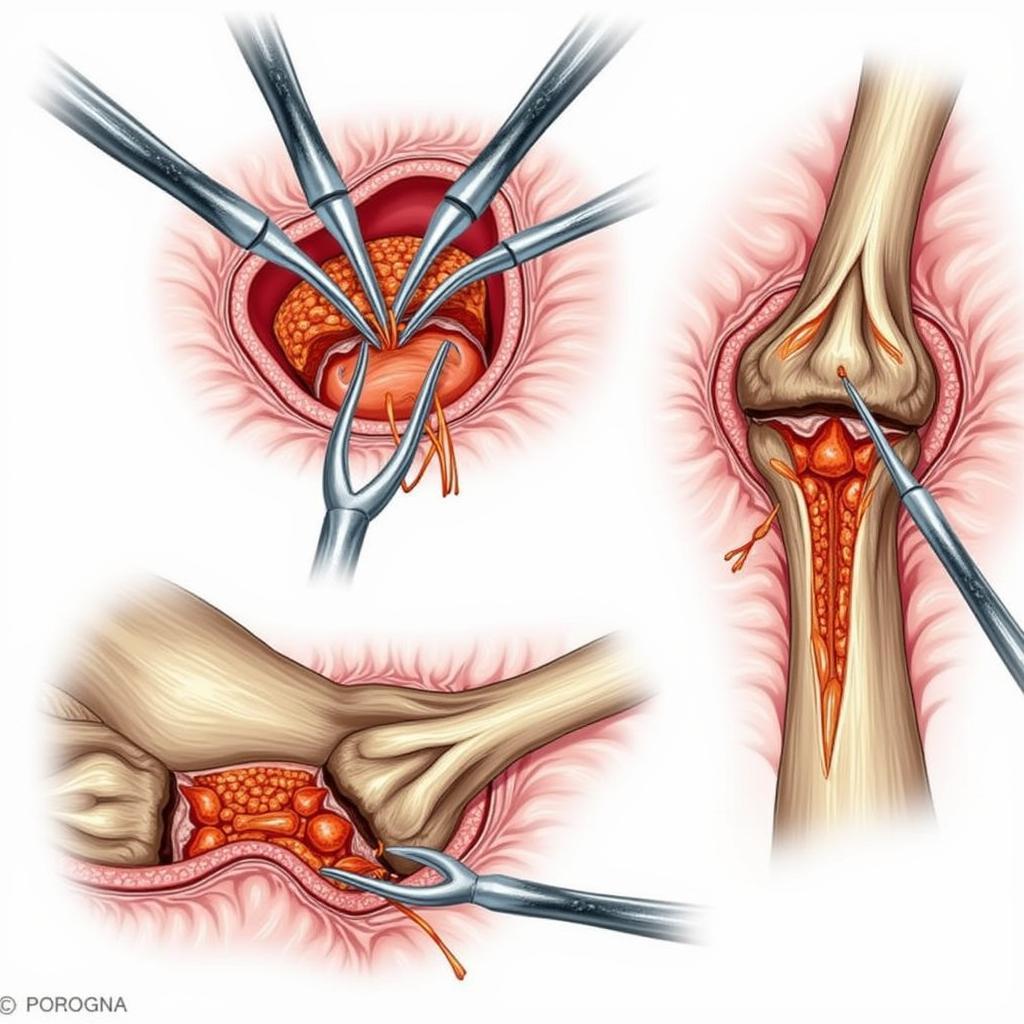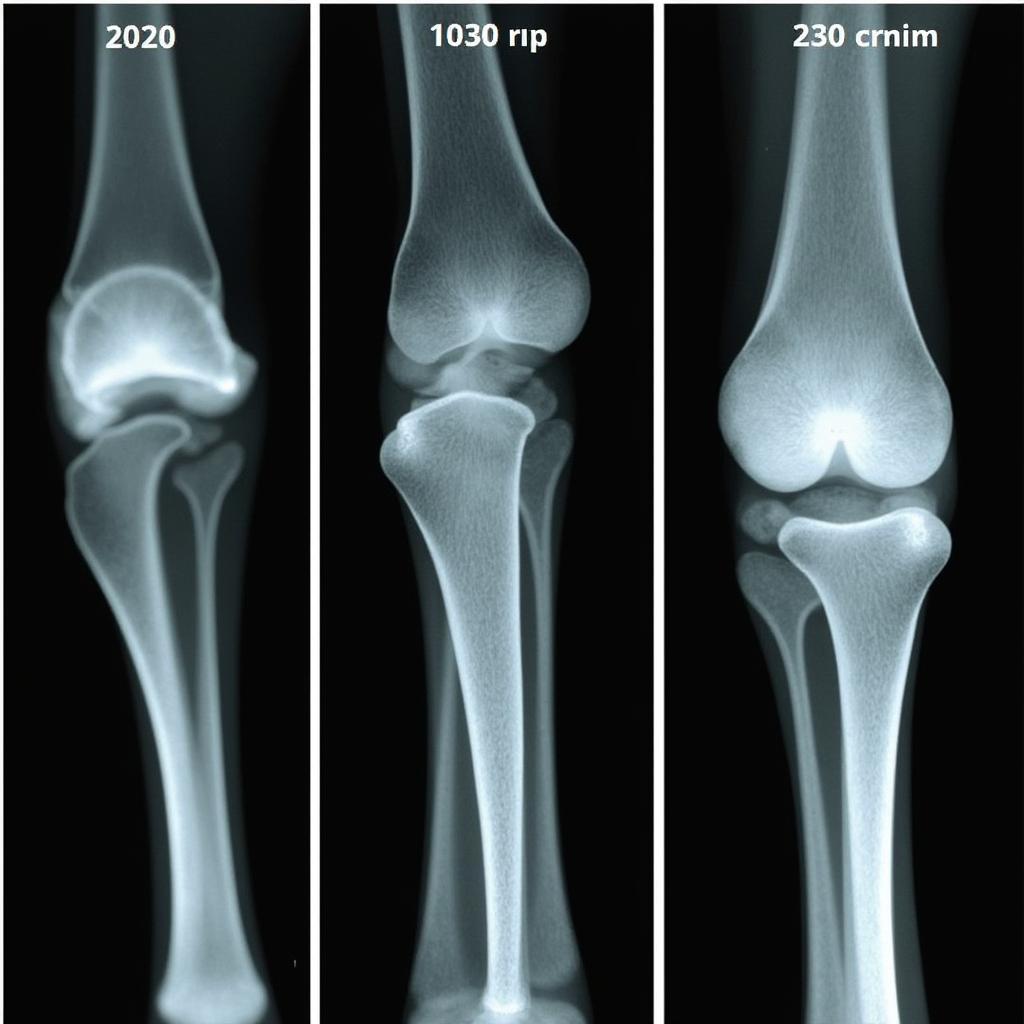Bone cysts in horses are fluid-filled cavities that develop within the bone. These cysts are a relatively common finding, especially in young, growing horses, and can often be discovered incidentally during routine radiographs. While many bone cysts are asymptomatic and resolve on their own, some can cause lameness or increase the risk of fracture, warranting careful monitoring and potential treatment. Knowing the causes, symptoms, and treatment options for bone cysts is vital for ensuring the health and well-being of your equine companion.
What Causes Bone Cysts in Horses?
The exact cause of bone cysts in horses is not fully understood, though several theories exist. One popular theory suggests that they arise from disruptions in blood flow within the bone during periods of rapid growth. This disruption can lead to areas of bone death and subsequent cyst formation. Trauma, although less common, can also contribute to the development of bone cysts. In some cases, bone cysts may be associated with underlying developmental orthopedic diseases. For example, a navicular bone cyst horse can be a significant concern.
Another prevalent location for bone cysts is the carpal bones, located in the knee. These cysts can be particularly problematic in performance horses, potentially causing lameness and interfering with training.
 Bone Cyst in Horse Carpal Bone
Bone Cyst in Horse Carpal Bone
Recognizing the Symptoms of Bone Cysts
Many bone cysts in horses are asymptomatic and discovered incidentally during radiographic examinations for other reasons. However, when bone cysts do cause clinical signs, lameness is the most common symptom. The severity of the lameness can vary depending on the size and location of the cyst, as well as the degree of associated bone weakness. Swelling or pain on palpation of the affected area may also be present. Occasionally, a bone cyst can weaken the bone to the point where a fracture occurs.
Subtle lameness, particularly after exercise, can be a red flag for a bone cyst. Careful veterinary evaluation, including radiographs, is essential for accurate diagnosis.
Diagnosing Bone Cysts: How are They Found?
Diagnosis of a bone cyst primarily relies on radiographic imaging. Radiographs allow veterinarians to visualize the characteristic appearance of a bone cyst: a well-defined, circular or oval area of decreased bone density. In some cases, further diagnostic imaging, such as computed tomography (CT) or magnetic resonance imaging (MRI), may be necessary to better evaluate the extent of the cyst and assess any associated bone damage. The choice of imaging modality depends on the specific case and the availability of resources.
Treatment Options for Bone Cysts in Horses
The appropriate treatment for a bone cyst depends on several factors, including the horse’s age, the location of the cyst, the severity of clinical signs, and the presence of any associated fractures. Small, asymptomatic cysts are often managed conservatively with rest and regular radiographic monitoring to track their progress. Larger or symptomatic cysts may require more aggressive treatment, such as surgical removal or injection of corticosteroids directly into the cyst.
 Surgical Removal of Bone Cyst in Horse
Surgical Removal of Bone Cyst in Horse
In some cases, IM injections in horses might be necessary as part of the overall treatment plan, especially if pain management is required. However, the specific medications and procedures should always be determined by a qualified veterinarian.
Prognosis and Management of Bone Cysts
The prognosis for horses with bone cysts is generally good, particularly for young horses with small, asymptomatic cysts. Many of these cysts will resolve spontaneously with time and rest. For horses with larger or symptomatic cysts, the prognosis depends on the success of treatment and the extent of any associated bone damage. Regular veterinary check-ups and radiographic monitoring are crucial for assessing the healing process and ensuring optimal management of the condition.
 Radiographic Monitoring of Bone Cyst
Radiographic Monitoring of Bone Cyst
Horses experiencing lameness or other clinical signs related to bone cysts may benefit from supportive therapies such as Pro Stride for horses. Consult your veterinarian to discuss suitable options. Sometimes, a horse can present with a horse lump under jaw, which requires a different diagnostic and treatment approach. It’s important not to confuse these two conditions.
Conclusion
Bone cysts in horses can be a concerning finding, but with appropriate diagnosis and management, the prognosis is often favorable. Understanding the causes, symptoms, and treatment options for bone cysts is essential for horse owners and caregivers. Regular veterinary care and diligent monitoring are crucial for ensuring the long-term health and soundness of horses affected by this condition. Early detection and intervention are key to minimizing the potential complications associated with bone cysts and maximizing the chances of a full recovery. If you suspect your horse may have a bone cyst, consult with your veterinarian for a thorough evaluation and personalized treatment plan.
FAQ
- Are bone cysts more common in certain breeds of horses?
- What is the difference between a bone cyst and a bone tumor?
- Can bone cysts in horses be prevented?
- How long does it typically take for a bone cyst to heal?
- What are the long-term implications of a bone cyst in a performance horse?
- Can bone cysts recur after treatment?
- What are the alternative treatment options if surgery is not feasible?
For further information on related topics, you can explore our articles on EPM meds for horses.
Please contact us at Phone: 0772127271, Email: [email protected], or visit our address at QGM2+WX2, Vị Trung, Vị Thuỷ, Hậu Giang, Việt Nam if you need any assistance. We have a 24/7 customer service team ready to help.